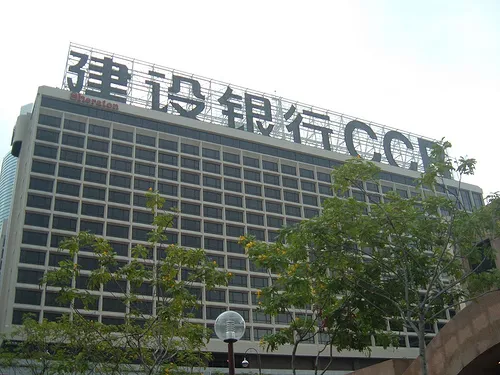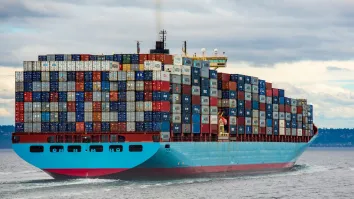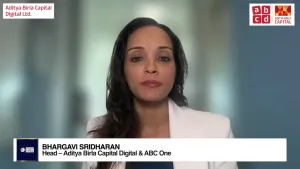
Why Chinese banks must mull over bailing out shadow banking
Check out what Barclays has to say.
According to Barclays, the shadow banking system in China refers mainly to non-bank lending (trust, entrusted loans, trade finance, leasing, pawnshop, private lending, and micro-lending), in our view, which provides financing to the real economy. Separately, as the second layer of financing, banks’ wealth management products (WMPs) repackaging financial products including non-bank lending and sovereign/money market products to bank customers.
Here's more from Barclays:
We estimate the total outstanding balance of non-bank lending and WMPs might have reached RMB 25.6trn and RMB 8.8trn as of end-3Q12, respectively. The key risk of WMPs, in our view, is the asset-liability duration mismatch, with fast-rolling short-term funding supporting some mid- and long-term projects. Any potential difficulty in new WMPs issuance might put pressure on banks’ liquidity.
Now, question is whether banks should repay investors’ loss if non-principal guaranteed products default. If so, that would be very negative for banks, in our view, as banks would face potential contingent liabilities for all off-balance sheet products. Settlement of Hua Xia’s recently defaulted equity-investment products will set a precedent for future bank liabilities to the shadow banking sector. Further regulatory moves should help clarify a banks’ responsibility in non-principal guaranteed WMPs sales and distribution, reduce maturity mismatch for shadow banking products, and reduce related operational risks, in our view.
What is shadow banking?
The shadow banking system can be described as the collection of credit intermediation involving entities and activities outside the regular banking system. In developed countries, like the US, the biggest shadow banking players are usually hedge funds, venture capital and private equity funds.
However, in China, shadow banking mainly refers to non-bank lendings (including trust, entrusted loans, bank acceptance, leasing company loans, pawnshop, private lending, and micro-lending), and separately as the second layer, WMPs repackaging financial products including non-bank lending and sovereign/money market products to bank customers.
We estimate that the non-bank lending amount has reached RMB 25.6trn as of end-3Q12, up 19% YTD from RMB 21.4trn at end-2011; and outstanding balance of WMPs amounted to RMB8.8trn at end-3Q12, up 73% YTD from RMB 5.1trn at end-2011.
Fast growing WMPs in recent years
WMPs is recently back in the spotlight again, with earlier commentary by BOC chairman Xiao Gang warning about shadow banking risks, as well as the most recent scandal over troubled WMPs sold by Huaxia. We estimate that the total outstanding balance of WMPs have increased rapidly in the past 4 years, from RMB 0.5trn at end-2008 to RMB 8.8trn at end-3Q12, equivalent to c10% of total system deposits.
The fast growing WMPs, in our view, could be attributable to: 1) China’s negative real interest rate in recent years, as depositors look for higher-yield investment channels; 2) intensifying deposits competitions among banks.
WMPs with maturity of 1-year currently could provide a weighted average investment return of 5.18%, much higher than the 1-year benchmark deposit rate of 3%.
Little transparency on asset allocation of WMPs
Recently, there has been lots of debate in China on whether WMPs should be counted as part of the shadow banking system or not. In our view, WMPs should be viewed as the second layer of shadow banking system, where financial institutions repackaging money market products and non-bank lendings into WMPs to sell to their retail and institutional customers.
However, there is little transparency on product asset allocation from WMPs sales disclosure. Data shows that, out of the 28,887 WMPs issuance this year, 67% of which are products said to be invested in bond and money market. However, we are not sure of the asset allocation of the total outstanding balance of WMPs.
Asset and liability mismatch the key risk of WMPs
WMPs issued by banks are mainly managed in two ways: 1) case by case – where issued WMPs are separately managed and directly linked to underlying assets; 2) asset pool, WMPs are not linked to any specific asset, just to a pool of assets, whose cash inflows may often not match the timing of scheduled WMP repayments.
Data shows that the proportion of newly issued short-term WMPs (maturity less than 3 months) as a percentage of total WMPs issuance has been rising from around 50% in early 2009 to current 65% level. We think the asset-liability mismatch is the key risk for WMPs managed by asset pool. Any difficulty in new WMPs issuance might put pressure on the return of the whole underlying pool, hence lead to potential liquidity problem for banks.
Negative impact on banks if they are required to repay investors’ losses in all cases
In fears of “social instability”, banks might be required by the regulator or government to share/repay investors’ losses for the products sold through bank branches or on-line channels.
The implication would be very negative for banks, in our view, as it means banks would face potential contingent liabilities for all off-balance sheet products, including non-principal guaranteed WMPs and those products NOT actually issued by banks (where banks only act as distributors). Non-principal guaranteed WMPs counted for around 66% of total outstanding WMPs issued by banks. We view the settlement of Huaxia’s equity investment fund as a good indication of whether banks will be bearing future liabilities for all investment products.


















 Advertise
Advertise




